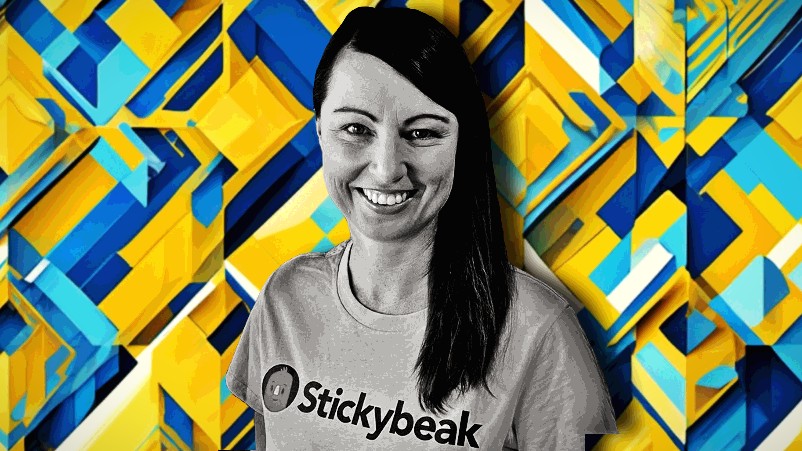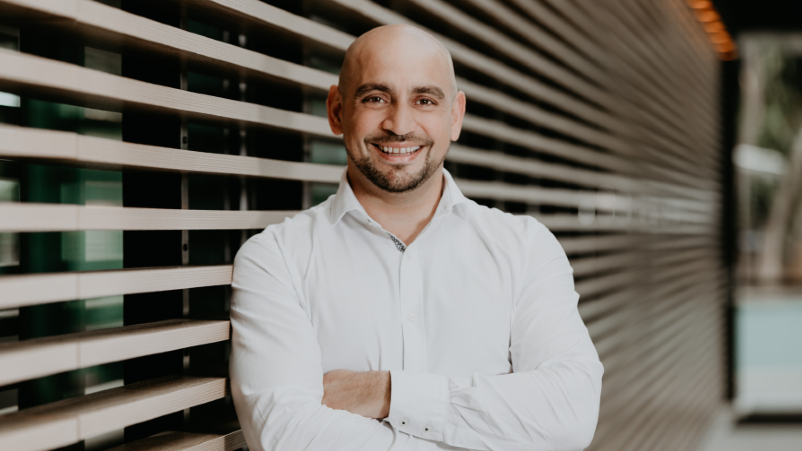Flipping FMCG research: Ex-Edelman chief, Les Mills CMO bid to scale $500, 60-second consumer testing platform, take on SurveyMonkey, Kantar, save squeezed marketers, out-human synthetic audiences

"Marketers know they need consumer feedback, they just cant afford a $50k tool to ask a few questions." Stickybeak CEO Anna Henwood aims to solve the FMCG research gap.
Auckland-based B2B SaaS platform Stickybeak is bidding to disrupt FMCG consumer testing – saving crunched marketers and exasperated agencies from product and creative fails in the process. Giants like Unilever, Dole and Fonterra are customers. But the mid-market is where Les Mills CMO turned Stickybeak CEO Anna Henwood sees greatest need and fastest growth – because their marketing teams have neither testing resource nor know-how. Which is why so many FMCG product launches and market expansions fail. The platform recruits from TikTok, Meta and YouTube to fill the demo gaps that panels fail to reach – and has learnt which performs best, where. Co-founder and former Edelman chief David Brain claims it makes consumer research "drag and drop ... as easy as ordering an Uber Eats". Henwood says it can be "done in 60-seconds" with results in 48 hours max – and she isn't unduly concerned by the rise of AI-powered synthetic audience platforms promising similar capability.
What you need to know:
- Stickybeak is moving into next scale phase of scale with its mission to disrupt consumer testing – initially for FMCG – making it much cheaper, faster and easier for marketers to consumer test creative, new products, packaging, market expansion messaging, even influencers, globally with results in 48 hours max at less than $500 a pop.
- Early backers of the Auckland-based B2B SaaS platform include Sacha Judd and Rowan Simpson of the Hoku Group, also early investors in Xero, TradeMe and Vend. Now the firm is about to close a further funding round that will value the business at $11m.
- Co-founded by David Brain, a former Edelman Apac, Middle East and Africa CEO, and current NED at ASX-listed holdco Enero, the firm uses a socially-recruited panel and drag and drop research interface to plug gaps in traditional quant research panels – particularly in younger demos.
- Brain claims it makes consumer testing “as easy as ordering an Uber Eats”.
- Now helmed by former Les Mills global CMO Anna Henwood, Stickybeak counts Dole, Fonterra, Sanitarium and Unilever amongst its clients. But it’s really aiming at the mid-sized FMCG market that has neither the resource nor the know-how to do consumer testing.
- Henwood says after it cracks FMCG, travel and ecom are major growth opportunities. Though Stickybeak won’t “stop anyone jumping into the boat,” regardless of sector.
- From experience with YouTube testing at Les Mills, Henwood said agencies will also love the tool – because it flips the testing process sequencing and takes away all the pain of the back-end rehash.
- While synthetic audiences and customers are on the rise, Henwood says there is a place for them, but summarising existing consumer responses can’t beat the real thing.
I’ve done lots of international marketing where I made some assumptions, or the CEO's daughter told me what we should do, or the sales director in Japan had some vibes on where we went… You knew it wasn't ideal, but it was kind of the best you had, because you didn't have $20-30k to drop on getting some local feedback.
Test and earn
A SaaS platform out of New Zealand will close a $1.5m funding round this month aiming to join the ranks of ANZ start-ups upending research’s pecking order – and take slice of a multibillion dollar market in FMCG alone. The end game? To become the Canva of consumer testing at $500 a pop, globally.
For now, Stickybeak is aiming squarely at FMCG testing and claims its tech and approach outperforms panels that find younger demos hard to reach while giving resource-squeezed marketers who know nothing about research the ability to do consumer testing in minutes. Or less.
Per CEO Anna Henwood, a former Les Mills global CMO and Tourism New Zealand marketer who took the helm two years ago, “done in 60-seconds is the challenge” to launch a quant test for anything to do with any consumer marketing campaign. “So influencers, logos, taglines, headlines, anything to do with NPD (new product development) claims, pack design, pack format, market expansion language, messaging, comms and positioning. There are set templates [for those jobs] and you can just jump into it and get your test populated and launching.”
The results – feedback from either 100 or 200 people recruited largely via social media in any market – will be back in 24-48 hours for “hundreds of dollars”.
While the likes of Tracksuit aim to disrupt the big brand tracking firms with faster, cheaper results, Stickybeak is laser-focused on consumer testing (though does have some competitive overlap with Tracksuit sister company, Ideally). “We’re Pro Tools for everyone,” per Henwood.
“There's different quant survey tools. My opinion is lots of those tools – the Survey Monkeys, the Pollfishes, even Kantar Marketplace – they’re great online quant tools for insights professionals and research managers. But they're still really tough for a marketer to use.”
That’s because marketers are not research professionals – and they’re already overstretched with the day job.
“[With traditional tools] they have to understand how to research and the research approach – when to use rating or comparative, when they can ask an open ender and what gets good feedback – and all of that is just not their day-to-day,” said Henwood. Especially in the mid-sized FMCG market, where “there’s maybe three of them in the team, if they’re lucky … and they are end-to-end on everything. They just don’t have that depth of knowledge in the space.”
But that’s the point.
“Now they don’t need it. Like Canva has helped them not need a creative agency anymore [for the small stuff] – they can jump into a template and get best practice design ideation up front – it’s the same sort of thing that we’re trying to do.”
As Stickybeak co-founder David Brain puts it, consumer quant testing is now “as easy as ordering an Uber Eats … it is literally drag and drop.”Nobody really predicted things like Brexit or the election of Donald Trump and that was when people began to become aware that some of the panels were becoming less than optimum.
Panel problems
Brain, a former Edelman Apac, Middle East and Africa CEO, and current NED at ASX-listed holdco Enero, co-founded Stickybeak five years ago alongside researcher David Talbot, and digital business builders Brody Nelson and Kyle Hickey. They’d spotted a market gap.
“The original observation was that it was very difficult for agencies and brands to be able to commission research themselves, and increasingly, in quant research, some demographics were very difficult to get to,” said Brain.
Panel providers, he suggested, “would happily admit” that some demographics are hard to fill within representative samples, particularly 18-24 year olds. As a result, “often they were bulking up the percentages”, overweighting to try and compensate. And then panels failed on some big calls. “Nobody really predicted things like Brexit or the election of Donald Trump and that was when people began to become aware that some of the panels were becoming less than optimum.”
Meanwhile, in some markets, panels are non-starters.
“One of our bigger clients is the World Health Organisation. We did a lot of their messaging during Covid – and really the only way that they could get to people in markets like Papua New Guinea, where there aren't panels, is through us. The reason for that was that back in the early days, we decided that we would recruit respondents through social media.”
First it recruited through Meta, followed by YouTube and then TikTok – which also solved the younger demo problem. Then the firm built a piece of tech so marketers could create questionnaires “and launch little quant surveys from their desktop …. Which meant you didn't have to use a research agency, you didn't have to use your research department.”
That was the first iteration. Then Stickybeak hired a marketer to run the thing – and grow it by selling to marketers. Henwood saw the potential to quickly scale if it could narrow the prop.This means now I don't need an insights manager. In fact, the insights manager hates doing this stuff, and they keep avoiding me to get this sort of feedback…
Marketing to marketers
“I’ve done lots of international marketing where I made some assumptions, or the CEO's daughter told me what we should do, or the sales director in Japan had some vibes on where we went… You knew it wasn't ideal, but it was kind of the best you had, because you didn't have $20-30k to drop on getting some local feedback.”
When she used Stickybeak at Les Mills – testing outdoor creative for the US market – the penny dropped. “This means now I don't need an insights manager. In fact, the insights manager hates doing this stuff, and they keep avoiding me to get this sort of feedback…”
To paraphrase the late entrepreneur and one-time Remington chairman Victor Kiam, she liked the product so much, she joined the company – and refocused it from broad market quant tool to tightly-focused consumer testing for FMCG marketers. Especially mid-sized FMCGs, often run by marketers out of giants like Unilever, Mars and Nestlé who find themselves bereft of research budgets and where the vast majority – 75-95 per cent – of new product launches will fail.
“It’s not that they don’t know they need feedback. They just can't afford a $50k tool to ask a few questions. So this is fitting that gap in the market where everyone knows they need consumer feedback. We've got something that's affordable and repeatable for them to do it with.”
Testing is actually really powerful when it's side by side with brand and agency. I don’t think anyone loves turning up and being told their baby is ugly. My philosophy is test the ingredients, not the cake.
Super mid-size me
The mid-sized FMCG brand research market is worth north of $140m in Australia, NZ and the UK alone, per Henwood. Globally it’s circa 30x that number.
“If you take [virtual professor] Mark Ritson’s ‘five per cent of marketing budgets should be [spent] on market research’, the 27,000 medium sized FMCG brands in just New Zealand, Australia and the UK equates to $142m,” per Henwood. “So that is the tight geo focus we are going after. But there is a big slice to get: take that globally and there are 770,000 brands that fit in that FMCG category.”
The company claims it can already deliver global coverage via its socially-recruited samples. Almost. “The only country I can't do yet is Syria,” said Henwood. She’s working on it.
Some big FMCG’s are likewise already onboard – including Fonterra, Dole, Sanitarium, Intersnack-owned Griffin’s – and the firm is already getting traction outside of FMCG. Alongside the World Health Organisation, the Bill Gates Foundation is also a customer and there’s some other global NGOs incoming.
“We’re not going to stop them jumping into the boat,” said Henwood. “I see us working through the verticals – there's a massive travel opportunity and I think there's a massive D2C opportunity with ecom. But FMCG is the one that's just cranking at the moment, so that's where our focus is.”
The firm currently sells annual packages from $5,000. That gives marketers 12 surveys over the year. (Henwood said they tend to run activity in bursts over a quarter.) Ahead of its capital raise close, Stickybeak is booking annually recurring revenue of $800k – but looking to hit $2m ARR within the next year – and the trajectory is steep. (A $1.5m raise at a valuation of $9m implies a revenue multiple of 11x – underlining that investors love B2B SaaS.)
I’ve done stuff for YouTube at Les Mills. You’re ready to go, everyone’s invested, all the production’s complete, you’re done on your edit time… And then Google runs the ABCD test. ‘Oh shit. Now I’ve got to completely redo my first five seconds and I’ve got to trim off 12 seconds’… No one enjoys that.
Flipping testing
Henwood claimed agencies are likewise signing up – because it flips the research sequencing for creative concept and early component consumer testing, taking out layers of inefficiency.
“Testing is actually really powerful when it's side by side with brand and agency,” she said. “I don’t think anyone loves turning up and being told their baby is ugly. My philosophy is test the ingredients, not the cake. If you are an agency and the brand has tested the headlines, the call to action, some of the imagery style and that turns up in your brief, you are away.”
Henwood suggests that inverted approach saves a lot of pain at the back-end.
“I’ve done stuff for YouTube at Les Mills. You’re ready to go, everyone’s invested, all the production’s complete, you’re done on your edit time… And then Google runs the ABCD test. ‘Oh shit. Now I’ve got to completely redo my first five seconds and I’ve got to trim off 12 seconds’… No one enjoys that. So that is not what we want to do with agencies and brands. It is about how do we help bring them back really usable, practical consumer feedback them helps them make a better decision and create better work.”
Panels vs. social recruitment
While panels have their challenges, Stickybeak uses them alongside its social recruitment.
“The reason is because panels are good in certain situations. If you want mums, the primary household shopper with children ten and under, a panel will find those for you in Australia and the US. If you want 18 to 24 year old blokes in the UK, you're going to need Tiktok to help you out there to get that demographic,” said Henwood.
Likewise there can be challenges in some markets with burning the sample turf.
“In New Zealand, for example Dynata is one of the key providers. They only have a certain amount of sample …. That means you can’t access it a lot, or every day – you are restricted by the database, who else buys it and when it is available. It’s pretty challenging for an online platform. So we have all of those recruitment options and that means we can be completely on demand and available anytime anyone wants to run their research,” she added. “That is what our platform does – it finds the right audience using the right recruitment method.”
Four years in, “our system is learning which of the channels is better in which markets for which demographics,” per David Brain. “It’s an unbelievably efficient way of recruiting.” Plus, “we’re instantly global”.
There will be a place for synthetic audiences … But I believe real feedback will always be real feedback, and you'll want to hear from what people think right now.
Stickybeak vs. synthetics
Synthetic audiences, customers and data are on the rise. Ritson-backed Evidenza.AI, founded by former B2B Institute bosses Jon Lombardo and Pete Weinberg is the latest start-up claiming it can get “really fucking close” to actual human responses – and is seemingly making headway with big brands.
But speaking in general terms – she wasn’t asked about Evidenza – Henwood said some marketers remain “very sceptical” about synthetic audiences, which she defines as “feedback derived from feedback that already exists”, or in other words, a lookalike.
While marketers appear to have little trouble overcoming scepticism when buying lookalikes from big digital platforms, in consumer testing terms “it’s not new, it’s not fresh – it's stuff that’s already out there that's easily summarised and bought back for you,” per Henwood. “You know, what one hundred 18 year olds have been asked before, and then that becomes one ‘average’ 18 year old,” she said, “Potentially a very confused” 18 year old. (But then, weren’t we all.)
“There will be a place for synthetic audiences ... But I believe real feedback will always be real feedback, and you'll want to hear from what people think right now.”
Come the end of this month, Stickybeak will have the next round of real feedback on what VCs and family offices think right now of Stickybeak’s scale roadmap. Henwood is quietly confident – with a third of the backing arriving as they opened the round.
“We’re progressing well.”


